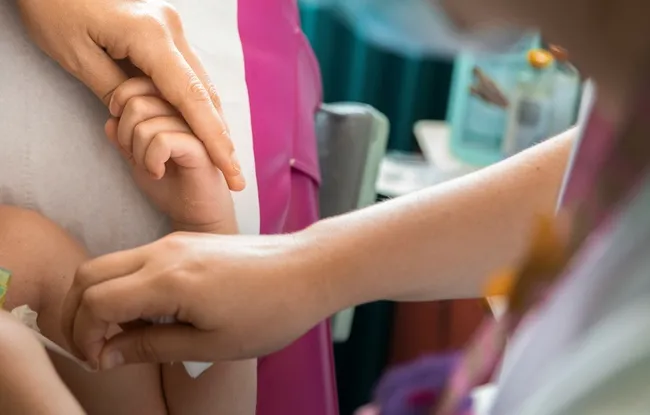- Home >
- Institut Curie News >
- New approaches for fighting neuroblastoma
Around 120 to 150 new cases of neuroblastoma are diagnosed each year in France, particularly in young children. “Certain forms of so-called high-risk cancers require an arsenal of therapies including standard chemotherapy, high-dose chemotherapy, followed by autologous stem cells transplants, surgery, radiotherapy and immunotherapy. And despite that only 50% of patients survive”, announces Dr Gudrun Schleiermacher, head of the Translational research in pediatric oncology laboratory (Inserm/Université Paris Cité) at Institut Curie.
Given this fact, Dr Schleiermacher and her team, in collaboration with two British laboratories with complementary skills, searched for other treatment options... and found them. They publish their findings in the journal Clinical Cancer Research.
ALK, the protein to be controlled
The researchers conducted their studies on the genetic alterations most frequently found in tumors (affecting 15% of neuroblastomas): those linked to the mutation or amplification of the ALK gene. This gene encodes a transmembrane receptor protein, and when it is modified or many copies are present in the cell, the protein becomes too active. It then triggers a chain of reactions, leading to cell proliferation.
ALK protein inhibitors, such as lorlatinib, are starting to show evidence of effectiveness against neuroblastoma. “But after a while the tumor returns and develops secondary resistance to the lorlatinib”, explains Gudrun Schleiermacher. “So we would like to counter these resistances.”
Two inhibitors are better than one
The scientists tested different treatment combinations on cell lines, namely ALK inhibitors (including lorlatinib) with chemotherapy, or lorlatinib with MDM2 inhibitors. This protein is at the start of a signaling pathway which acts in synergy with the ALK protein. Inhibiting one or the other at the same time could increase the desired effects. And that was the case! Although the combination of lorlatinib and chemotherapy showed good results, the combination of lorlatinib and an MDM2 inhibitor provided improved control of the tumor growth, and even made the tumor disappear.
All of these preliminary data, as well as those concerning other combinations, now need to be validated through a phase I/II clinical trial, which Dr Schleiermacher hopes to be able to set up quickly. “Our research also reveals that the same combination does not always produce the same effect, depending on the tumor. It is therefore essential to develop biomarkers to classify patients from the outset, and know which combination to apply to each one”, continues Dr Schleiermacher. “It also shows the importance of continuing to search for other molecules that could act on ALK.”
In France, the studies conducted at Institut Curie were supported by the Annenberg Foundation, the charity Hubert Gouin Enfance et Cancer, the Enfants Cancer Santé federation, the French Childhood Cancer and Leukaemia Society, the charities Les Bagouz à Manon and Les amis de Claire and the ARC Foundation for Cancer Research.
Reference: Tucker, E. R. et al., Combination Therapies Targeting ALK-aberrant Neuroblastoma in Preclinical Models, Clin Cancer Res (2023). https://doi.org/10.1158/1078-0432.CCR-22-2274
Research News
Discover all our news
Celebration
The Immunity and Cancer research unit (U932) celebrates its twentieth anniversary
12/12/2025
Artificial Intelligence
08/12/2025


